The paradise fish (Macropodus opercularis) is a captivating addition to any aquarium, known for its vibrant colors and distinct personality. As one of the first species introduced to Europe, following only the goldfish, it has played a crucial role in the popularization of aquarium husbandry worldwide. Although it is relatively undemanding in care, the paradise fish can be territorial and may exhibit aggression toward its tank mates. Understanding its behavior is essential for successful cohabitation in community tanks, making it a fascinating choice for both novice and experienced aquarists.
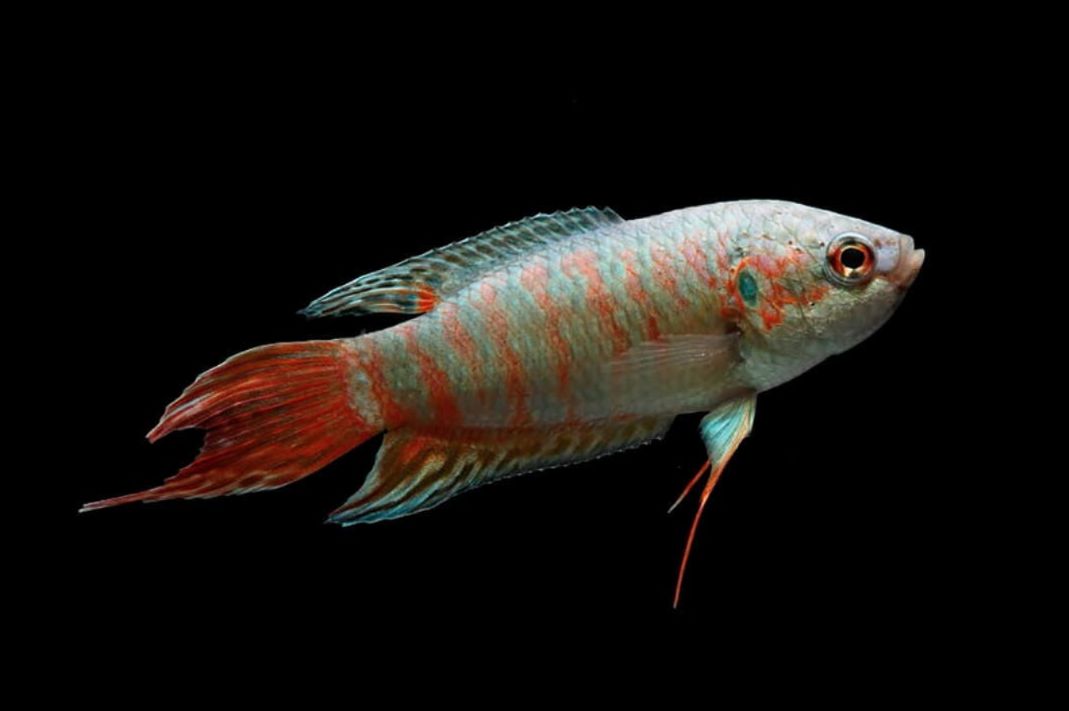
Contents
Habitat in the wild
The paradise fish, scientifically known as Macropodus opercularis, is a striking member of the Osphronemidae family, commonly referred to as the gourami family. This diverse group of freshwater fish includes popular species such as the dwarf gourami (Trichogaster lalius), kissing gourami (Helostoma temminkii), and pearl gourami (Trichopodus leerii). Notably, these fish possess a specialized labyrinth organ, enabling them to breathe air from the surface in addition to extracting oxygen through their gills.
Native to Southeast Asia, the paradise fish inhabits small water bodies such as drains, paddy fields, and shallow lakes, ranging from Vietnam to Korea. Remarkably adaptable, especially those from the southern regions of its habitat, this species can thrive in cool waters, tolerating temperatures as low as 15 °C. Its diet is omnivorous, favoring protein-rich foods like insect larvae, worms, and small fish.
The paradise fish holds historical significance in the aquarium hobby, being one of the first species imported to Europe in the late 19th century. In 1869, a French officer returning from China brought these exotic fish to Paris, captivating the attention of Pierre Carbonnier, a French naturalist. Carbonnier successfully bred the paradise fish, marking a pivotal moment in tropical fishkeeping. His observations revealed fascinating behaviors, such as the male constructing a bubble nest for the eggs and providing attentive care for the young, much like a babysitter.
The excitement surrounding these discoveries sparked widespread interest among nature enthusiasts in Paris. The ease of breeding the paradise fish opened new avenues for the aquarium trade, leading to a profitable business that continues to thrive today.
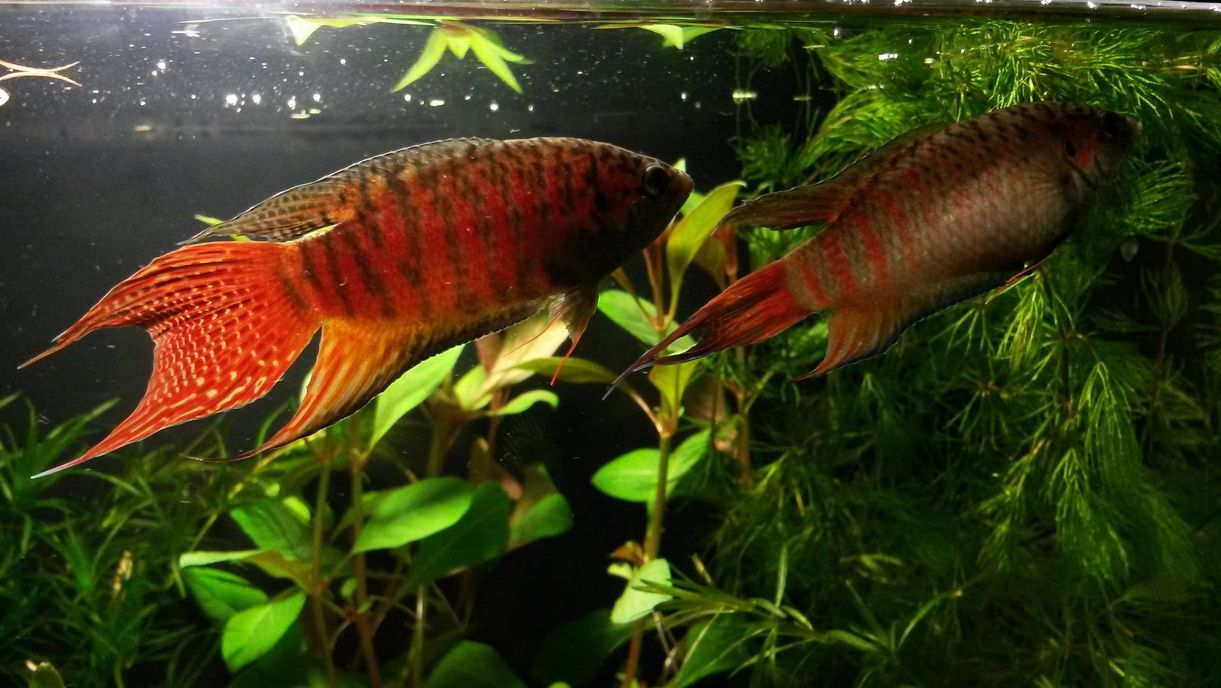
Description
Size
The paradise fish can grow up to 10 cm (4 inches) in length, although in an aquarium setting, it typically reaches about 6.4 to 7.6 cm (2.5 to 3 inches). Variations in size can occur due to factors such as genetics, diet, and environmental conditions. Generally, males are slightly larger and more vibrant in color than females.
Creating a healthy and well-maintained aquarium environment is essential for allowing paradise fish to reach their full potential size. Providing optimal water quality, a balanced diet rich in protein, and suitable space can significantly influence their growth and overall health, making these considerations important for any aquarist.
Lifespan
In captivity, paradise fish (Macropodus opercularis) typically have an average lifespan of 3 to 5 years. However, with exceptional care and a healthy environment, some individuals can live for up to 7 years or even longer. Factors influencing their lifespan include genetics, diet, water quality, stress levels, and the overall care provided by the aquarium keeper.
To maximize longevity, it’s essential to maintain optimal water conditions, provide a balanced diet rich in nutrients, and minimize stress through appropriate tank mates and environmental enrichment. Understanding these elements not only enhances the health of paradise fish but also enriches the aquarium experience for enthusiasts.
Body
The paradise fish (Macropodus opercularis) features a body that is notably flattened from the sides, characteristic of many climbing perch species. The dorsal, anal, and tail fins are well-developed, with the males displaying elongated fins that culminate in filamentary extensions.
Coloration typically ranges from brownish to greenish-brown, adorned with alternating red and green stripes along the body. The dorsal and anal fins exhibit a bluish hue with red filamentary outgrowths, while the tail fin is predominantly red. Notably, the intensity of the fish’s coloration increases with rising water temperatures and during the mating season, making them particularly striking and vibrant. These physical traits not only enhance their aesthetic appeal but also play a role in their social interactions and breeding behaviors within the aquarium setting.
| Characteristic | Description |
|---|---|
| Scientific Name | Macropodus opercularis |
| Common Name | Paradise Fish, paradise gourami |
| Family | Osphronemidae (Gourami family) |
| Origin | East Asia (China, Taiwan, Vietnam) |
| Size | Up to 3 inches (7.5 cm) in length |
| Lifespan | Typically 3 to 5 years in captivity |
| Temperament | Generally aggressive, especially towards its own kind |
| Habitat | Freshwater ponds, slow-moving waters, and marshes |
| Tank Size | At least 20 gallons for a single fish |
| Water Parameters | Temperature: 72°F to 82°F (22°C to 28°C) |
| pH: 6.0 to 8.0 | |
| Hardness: Soft to moderately hard | |
| Diet | Omnivorous, eats small insects, crustaceans, and plants |
| Coloration | Vibrant colors, typically blue, red, and orange |
| Labyrinth Organ | Possesses a labyrinth organ to breathe air from the surface |
| Breeding Behavior | Builds bubble nests on the water’s surface for spawning |
| Compatibility | Best kept alone or with other large, robust species |
| Avoid keeping with small or timid tankmates | |
| Care Difficulty | Moderate to experienced aquarium keepers |
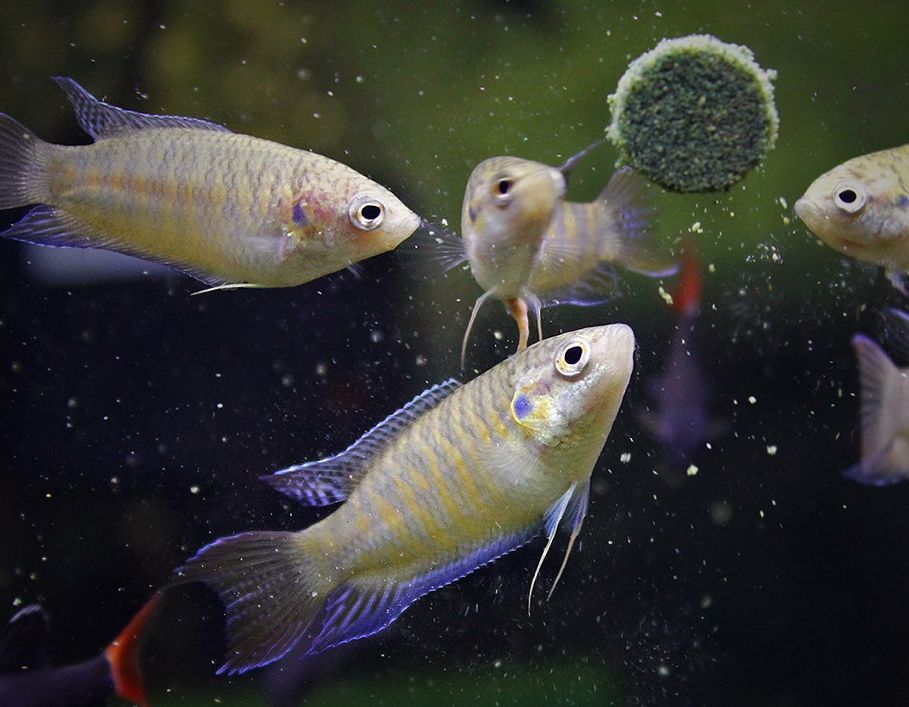
Difficulties in keeping
Paradise fish are renowned for their adaptability to a variety of tank conditions, including tank size, water temperature, feeding habits, and water chemistry. They can coexist well with similarly sized tank mates; however, it is important to note that males can be highly aggressive toward one another, often resulting in lethal fights. Therefore, it is advisable to keep either a single male or a male-female pair, ensuring that adequate hiding spots are available for the female.
In addition to their social behavior, paradise fish contribute positively to the aquarium environment by helping to control pest populations. Within a few days, they can effectively reduce the presence of hydra and planaria, common nuisances often introduced with live food. Hydra can pose a threat to both juvenile and adult fish, and to eliminate these pests, it is recommended to introduce a hungry paradise fish into a tank devoid of other inhabitants.
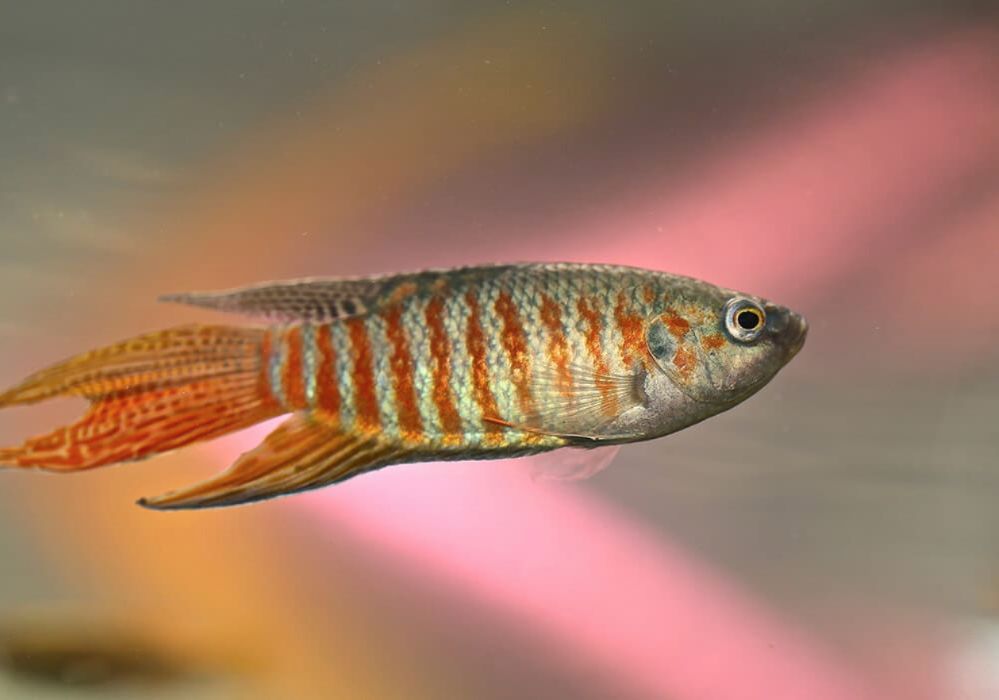
Care and keeping in a tank
Tank size
For a single paradise fish, a minimum tank size of 20 gallons (75 liters) is recommended. This space allows the fish to swim comfortably and establish its territory. Opting for a larger tank is advisable whenever possible, as it provides additional swimming space and the opportunity to incorporate decorations or tank mates without overcrowding.
If you plan to keep more than one paradise fish, a tank size of at least 30 gallons (113 liters) is essential. This additional space helps accommodate their territorial nature and reduces the likelihood of aggression toward each other.
It’s important to remember that these tank size recommendations are designed to meet the specific needs of paradise fish and their aggressive tendencies. A larger tank equipped with ample hiding spots—such as plants, caves, or driftwood—and decorations can foster a more stable and harmonious environment. Additionally, maintaining good water quality and performing regular water changes are crucial for the health and well-being of your fish.
How many paradise fish in a tank?
The number of paradise fish that can be kept in a tank depends on several factors, including tank size, filtration capacity, and the fish’s temperament. Given their territorial and somewhat aggressive nature—particularly towards their own kind and similar-looking species—it’s crucial to carefully consider stocking levels.
For a single paradise fish, a minimum tank size of 20 gallons is recommended. However, if you intend to keep multiple fish, a larger tank is necessary to accommodate their territorial behavior and minimize aggression. A tank size of at least 30 gallons is more suitable for housing several paradise fish.
Male paradise fish are especially aggressive toward one another, so it is generally best to keep only one male per tank. If you wish to keep multiple males, you should aim for a tank of 50 gallons or more, equipped with ample hiding spots to help establish territories and reduce conflict.
When keeping multiple paradise fish, a recommended ratio is one male to two or three females. This distribution helps disperse the male’s attention and minimizes the likelihood of constant aggression between males.
Compatibility with other species is another vital consideration. Choose peaceful, non-aggressive tank mates that can coexist with paradise fish, avoiding slow-moving or long-finned species that may become targets of aggression.
It’s important to closely monitor the behavior of paradise fish when introducing new individuals or rearranging the tank setup. If any fish display signs of excessive aggression or stress, they may need to be separated to prevent injuries and ensure the well-being of all inhabitants.
To promote a harmonious environment, provide plenty of hiding spots and visual barriers in the aquarium. This setup helps create distinct territories and reduces confrontations, fostering a healthier community tank.
Water parameters
The paradise fish is known for its hardiness and adaptability to various environmental conditions. Its distinctive features—such as a varied diet, tolerance for different water qualities, and resilience to many infections—make it a popular choice among beginner aquarists.
To ensure optimal health, it’s essential to maintain the following water parameters:
Temperature: Paradise fish thrive in a tropical environment with temperatures ranging from 72°F to 82°F (22°C to 28°C). Maintaining stable water temperatures is crucial to avoid stressing the fish.
pH: A pH level between 6.0 and 8.0 is ideal. While paradise fish can tolerate a wide range of pH levels, keeping the water slightly acidic to slightly alkaline is recommended. Stability in pH is vital to prevent harmful fluctuations.
Hardness: Paradise fish can adapt to various water hardness levels, but it’s best to maintain moderately soft to moderately hard water. Aim for a general hardness (GH) of 4 to 15 dGH and a carbonate hardness (KH) of 4 to 10 dKH.
Ammonia, Nitrite, and Nitrate: Both ammonia and nitrite should always be maintained at 0 ppm, as they are toxic to fish. Nitrate levels should ideally remain below 20 ppm. Regular water changes are essential for sustaining good water quality.
Filtration and Aeration: Adequate filtration and aeration are critical for maintaining water quality and oxygen levels. Paradise fish possess a labyrinth organ that allows them to breathe air from the water’s surface, making surface agitation beneficial. While a powerful filter is necessary, it should not create excessive water flow, as strong currents can stress the fish and lead to exhaustion.
Tank decor
When decorating a tank for paradise fish, it’s essential to provide adequate shelters to accommodate their territorial nature. A good rule of thumb is to have one shelter for each female and male. In the wild, each fish has its own territory that it actively guards. Therefore, if you are housing two paradise fish, place two similar shelters at opposite sides of the tank.
In addition to shelters, incorporate coarse-leaved and robust aquatic plants around these areas. Floating plants can also provide additional cover and create a more natural environment. It is advisable to use dark-colored substrate for the tank bottom, as this contrasts beautifully with the fish’s vibrant coloring, making them more visually appealing.
By thoughtfully arranging tank decorations, you can create a comfortable and secure habitat that helps reduce stress and encourages natural behaviors in paradise fish.
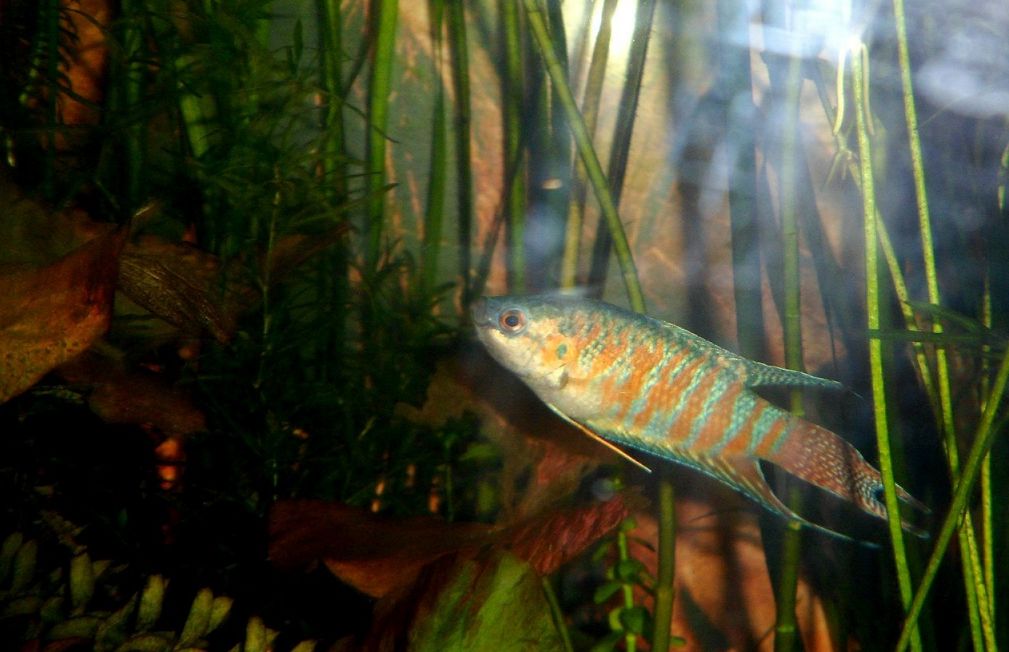
Diet
The paradise fish is an omnivorous species that, in the wild, prefers protein-rich foods over plant matter. Their natural diet consists of a variety of small insects, crustaceans, zooplankton, and some plant material. Replicating this balanced diet in captivity is essential for their health and vitality.
To ensure paradise fish thrive, consider the following food options:
High-Quality Pellets or Flakes: Select commercially prepared fish pellets or flakes specifically formulated for tropical fish. These should provide a good balance of proteins, fats, and essential nutrients, serving as the staple food for paradise fish.
Frozen or Live Foods: Incorporating live or frozen foods into their diet is highly beneficial. Options like brine shrimp, bloodworms, daphnia, and small insects offer essential nutrients and closely mimic their natural diet. While these foods are highly nutritious, be mindful of their tendency to overeat. It is advisable to feed paradise fish twice a day in small portions to prevent gluttony.
Micropellets or Powder Foods: For juvenile or very small paradise fish, micropellets or powdered foods are ideal, ensuring they receive appropriately sized meals.
Providing a varied diet is crucial to meet all their nutritional needs. Feed them multiple small portions throughout the day, rather than one large meal, to mimic their natural feeding behavior and minimize the risk of overeating. Overfeeding can lead to water quality issues and health problems.
Tank mates
This is quite aggressive kind, first of all it is true about the male species. Therefore, choosing tank mates is quite a difficult task. Many males are very aggressive towards each other and other fishes as well, that’s why it’s better to keep just one couple and put large sized tank mates into the volume.
The best idea is to keep paradise fish in a species tank, where only representative of its kind live, at that there should be one male and one or several females. The paradise fish males are extremely aggressive towards each other, they fight for the territory and hurt each other.
It is especially not recommended to keep goldfishes, angelfishes and discus fish in one tank with paradise fish as well as small fishes like neon tetra, guppies at others. It is a skilled hunter, so any juveniles won’t survive in one tank with it.
Here are some suitable tank mates that can coexist peacefully with paradise fish:
- Harlequin Rasboras (Trigonostigma heteromorpha)
- Neon Tetras (Paracheirodon innesi)
- Ember Tetras (Hyphessobrycon amandae)
- Glowlight Tetras (Hemigrammus erythrozonus)
- Black Neon Tetras (Hyphessobrycon herbertaxelrodi)
- Cardinal Tetras (Paracheirodon axelrodi)
- Rummy Nose Tetras (Hemigrammus rhodostomus)
- Dwarf Gouramis (Trichogaster lalius or Trichogaster chuna)
- Sparkling Gouramis (Trichopsis pumila)
- Celestial Pearl Danios (Danio margaritatus)
- White Cloud Mountain Minnows (Tanichthys albonubes)
- Dwarf Rasboras (Boraras spp.)
- Endler’s Livebearers (Poecilia wingei)
- Guppies (Poecilia reticulata)
- Platies (Xiphophorus spp.)
- Corydoras Catfish (Corydoras spp. – pygmy cory, panda cory, adolfoi catfish)
- Otocinclus Catfish (Otocinclus spp.)
- Bristlenose Plecos (Ancistrus spp.)
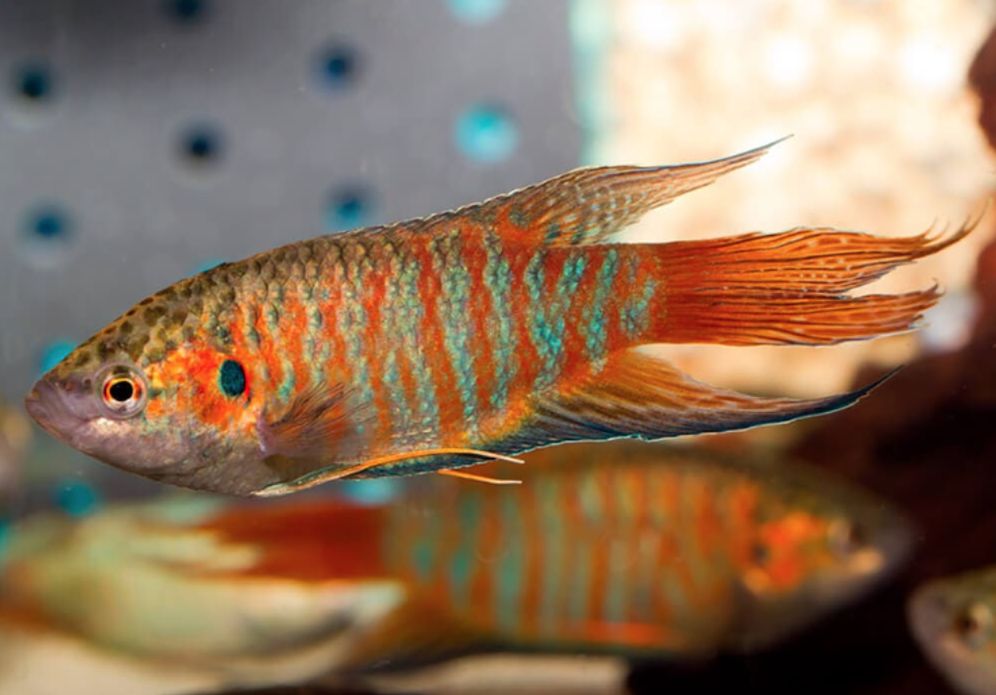
Gender differences: male vs female
Differentiating between male and female paradise fish (Macropodus opercularis) is essential for effective breeding and care. Several physical and behavioral characteristics can help aquarists identify these differences:
Size: Male paradise fish are generally larger than females. Males can grow up to 3 inches (7.5 cm) in length, while females typically reach about 2.5 inches (6.3 cm).
Coloration: Males display vibrant and intense colors, often showcasing a stunning combination of blue, red, orange, and iridescent shades on their bodies and fins. In contrast, females have more subdued colors and less vivid patterns.
Fins: The fins of male paradise fish are more elongated and pronounced, particularly the dorsal and anal fins, which often feature extended rays that enhance their ornamental appearance. Female fins are generally shorter and less elaborate.
Behavior: Male paradise fish are known for their territorial and aggressive behavior, especially towards other males and similar-looking fish. They frequently flare their fins and engage in displays to assert dominance and attract females. Females, while less aggressive, can still exhibit territorial behavior, particularly during breeding.
Ovipositor: A notable physical difference is the presence of an ovipositor in females. This small tube-like structure, located near their vent, is used during spawning to release and deposit eggs. Males do not possess this structure.
Breeding
Breeding is quite simple, however the male makes the process more difficult. While building a nest and spawning it becomes very aggressive towards the female, so shelters could not have come at a better time in this case.
The older the male is the more aggressive it becomes and very often it kills the female.
You can breed paradise fish in small volumes. Floating hornwort or other floating tank plants can be used and spawning substrate.
Adult reproductive species should be put into separate volumes several days before spawning. When you put the paradise fish ready to spawn into a spawning tank, they start getting interested with each other right away.
A small tank can be used as a spawning one. It should be filled to 3/4 full with water from the old tank plus 1/4 of new soft water.
The water level should be 7—15 cm for small species and 20 cm — for large ones. Make a shelter for the female from small leaved plants.
When everything is ready put the couple into the spawning tank and rise the water temperature by 2-3 °C.
The male always initiates the spawning process. Some time later it starts building a floating nest from bubbles, where the fish will put eggs. There the eggs will have the most favorable conditions, because the eggs need a lot of oxygen for proper development.
There are some recorded cases when the male builds a nest not on the water surface, but in hollows of tree roots, where the nest is sheltered with something from above and it doesn’t float on the water surface.
When the paradise fish finishes building the nest, the male stops warding off the female and vise versa starts to attract her and wants her to get inside by performing kind of a ritual dance.
The female that is ready to spawn must have a rounded abdomen filled with eggs. The spawning process starts when the female swims to the nest near which the male swims. During the spawning the fishes hold each other for a moment and squeeze eggs and milt. Then the eggs go up to the tank water surface.
The male quickly gathers them into its mouth and brings them to the nest. This can be done lots of times till the female lays all the eggs.
After each spawning the female must have a chance to hide among the tank plants to have some rest. If she doesn’t have this chance, the male can even kill her. That’s why when the spawning is over, take the female out of the spawning tank.
The paradise fish male takes care of the eggs. In about four days after the spawning remove the male from the tank as well. If you don’t do this, it may eat almost all its offspring.
It happens sometimes, that the male doesn’t demonstrate any parental instinct or the conditions aren’t favorable for this and it leaves the nest and eats the eggs. Such a male should be removed from the tank immediately.
The eggs will grow on their own. To make sure that they won’t get any fungus infection, add 2-3 drops of 1% methylthioninium chloride solution per one liter of water into the tank.
Small paradise fish larvae will hatch from the eggs in 1-2 days after spawning and they will stay under the nest. What is interesting, is that the nest helps the juveniles to feed during the first days of their lives.
Parts of plants, saliva that contains proteins by this time loose all its germicidal properties and start to rot. Therefore, lots of infusorian, rotifer, small worms and then crustaceans appear under the nest.
The same gathering of small organisms can be found among the roots of floating tank plants. Once the juveniles start to swim and feed, remove the male from the tank.
In 8-12 days since the day when the juveniles start to feed themselves you should add cyclops into their diet. It has to be rather diversified and the amount of food should be sufficient, so that the juveniles swim among the food. Each two days renew 2/3 of the tank water with the fresh one.
A lung-like labyrinth organ starts helping the juveniles to breathe only in 3-5 weeks after their birth. When the juveniles breathe only using their gills the water level in tank should be low and it should be blown trough with air all the time.
You can’t decrease the water temperature at this time. The juveniles behavior will show you that they are already breathing with their labyrinth organ as well. They will regularly swim up to the water surface and gasp the air.
Now you can raise the water level in a tank and gradually, by 1—2 °C in a week decrease the water temperature.
If you meet all the above mentioned requirements, paradise fish juveniles will grow fast and at the age of several month old they will have the same coloring as the adults have.
If the juveniles grow with a different rate, small ones can be eaten by the large juveniles. You can avoid this by sorting the juveniles according to their size.
Small climbing perches species become reproductive at the age of 7-8 months and the larger ones a bit later.